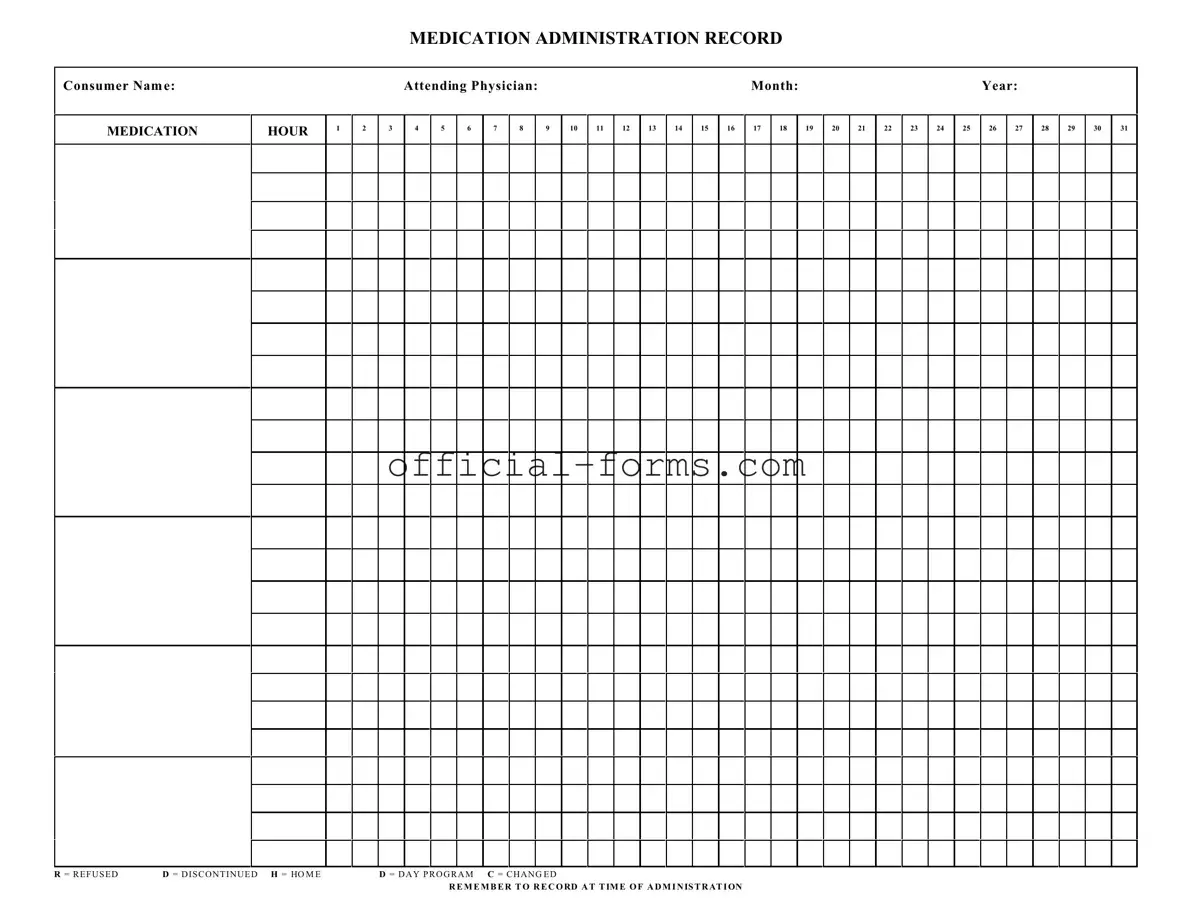Blank Medication Administration Record Sheet Form
The Medication Administration Record Sheet is a crucial document used in healthcare settings to track the administration of medications to patients. This form ensures that each medication is given at the correct time and allows for accurate record-keeping by healthcare professionals. By documenting refusals, changes, and other relevant details, the sheet supports patient safety and effective treatment plans.
Open My Medication Administration Record Sheet Now
